Burkert Mass Flow Controller Technology Fundamental To Development of Revolutionary Plasmajet Surgical System
4th September 2009
Source:
Burkert Fluid Control Systems
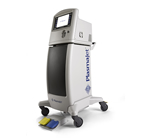
The ultra-fine control, accuracy and repeatability provided by Burkert’s CMOSens mass flow controller technology (MFC) has been instrumental in enabling Plasma Surgical to develop PlasmaJet, the first and only true plasma surgery system for surgical cutting and coagulation.
“It is true to say that the ability of Burkert’s mass flow controller to control very low gas flows precisely, and with continuous repeatability, has made our unique technology possible,” said Professor Nikolay Suslov - Chief Technology Officer for Plama Surgical, and inventor of the PlasmaJet Technology.
PlasmaJet is a virtual scalpel that enables surgeons to achieve more, with less damage to tissue. It comprises a console, a service trolley and a range of single use hand pieces. The console houses the control system with LCD display and touchpad. There is also an integrated cooling circuit, which uses Burkert fluid control valves to cool the tip of the hand-piece.
FDA-approved, the PlasmaJet system cuts & coagulates tissue with a fine beam of electrically neutral, high energy plasma. This is generated by ionizing a low flow of inert argon gas within the insulated body of a single use hand-piece. The gas is excited into a plasma state & emerges from the tip of the hand-piece as a precise pale blue jet stream.
Burkert’s involvement in the PlasmaJet development project began as a result of problems with the mass flow controllers that Plasma Surgical was using initially. The problem was lack of consistency in settling times from one MFC to another; and the ramifications this had on the correct operation of the PlasmaJet. For the system to work properly, the MFC first has to provide the high pressure / high flow rate required to ignite the plasma, & then ramp down to tenths of slpm. It is important that there is no over-shoot, otherwise the plasma beam is lost.
Burkert’s brief upon joining the project was to provide an MFC that would avoid this problem, controlling the extremely low flow rates with a repeatable accuracy of +/-0.01 slpm. In addition, other elements of the specification required that the MFC should be suitable for use in EMC noisy environments (each unit is sited below a large 3.5kV power supply and has two fans working at low frequency); that each MFC should be stable between 25 & 40 (degreesC); and that manufacturing tolerances should ensure each MFC has the same settling time.
The first prototype of the 8711 MFC was supplied just 9-days after Burkert’s initial visit to Plasma Surgical, in August 2008. This unit was then tested in Sweden that same month at Plasma Surgical’s R&D facility, in the presence of engineers from Burkert’s Gas segment support team. Following successful tests, the Burkert factory created a part number for the variant of the 8711, in October 2008. This was followed by the RoHS statement and request for UR approval, also in November 2008. The culmination of this activity also occurred in the same month, with a pre-production order to Burkert for an initial batch of ten 8711 units. From start to finish, therefore, the development process had taken just three months.
“Working in partnership with Burkert enabled us to do what we otherwise couldn’t have done,” said Professor Nikolay Suslov, “Burkert were interested enough in the application to take up the considerable challenge, understand it, and configure a solution that worked, shortening our development time considerably. We could have taken much longer, or even failed in our development without their input. We are very happy with them.”
Key to the success of PlasmaJet application is the unique CMOSens(registered) technology integrated into 8711 MFC. This operates according to a thermal principle which has the advantage of delivering the mass flow without any corrections for the required pressure or temperature. The actual flow rate is detected by a sensor embedded in the wall of a specifically designed bypass channel, into which a small part of the total gas stream is diverted, ensuring laminar flow conditions.
The sensor element, a CMOS chip, contains a heating resistor and two temperature sensors (thermopiles) which are arranged symmetrically upstream and downstream of the heater. The differential voltage of the thermopiles is a measure of the mass flow rate passing this bypass channel; the calibration procedure employed ensuring a unique assignment of the sensor signal to the total flow rate passing the device.
PlasmaJet is a virtual scalpel that enables surgeons to achieve more, with less damage to tissue. It comprises a console, a service trolley and a range of single use hand pieces. The console houses the control system with LCD display and touchpad. There is also an integrated cooling circuit, which uses Burkert fluid control valves to cool the tip of the hand-piece.
FDA-approved, the PlasmaJet system cuts & coagulates tissue with a fine beam of electrically neutral, high energy plasma. This is generated by ionizing a low flow of inert argon gas within the insulated body of a single use hand-piece. The gas is excited into a plasma state & emerges from the tip of the hand-piece as a precise pale blue jet stream.
Burkert’s involvement in the PlasmaJet development project began as a result of problems with the mass flow controllers that Plasma Surgical was using initially. The problem was lack of consistency in settling times from one MFC to another; and the ramifications this had on the correct operation of the PlasmaJet. For the system to work properly, the MFC first has to provide the high pressure / high flow rate required to ignite the plasma, & then ramp down to tenths of slpm. It is important that there is no over-shoot, otherwise the plasma beam is lost.
Burkert’s brief upon joining the project was to provide an MFC that would avoid this problem, controlling the extremely low flow rates with a repeatable accuracy of +/-0.01 slpm. In addition, other elements of the specification required that the MFC should be suitable for use in EMC noisy environments (each unit is sited below a large 3.5kV power supply and has two fans working at low frequency); that each MFC should be stable between 25 & 40 (degreesC); and that manufacturing tolerances should ensure each MFC has the same settling time.
The first prototype of the 8711 MFC was supplied just 9-days after Burkert’s initial visit to Plasma Surgical, in August 2008. This unit was then tested in Sweden that same month at Plasma Surgical’s R&D facility, in the presence of engineers from Burkert’s Gas segment support team. Following successful tests, the Burkert factory created a part number for the variant of the 8711, in October 2008. This was followed by the RoHS statement and request for UR approval, also in November 2008. The culmination of this activity also occurred in the same month, with a pre-production order to Burkert for an initial batch of ten 8711 units. From start to finish, therefore, the development process had taken just three months.
“Working in partnership with Burkert enabled us to do what we otherwise couldn’t have done,” said Professor Nikolay Suslov, “Burkert were interested enough in the application to take up the considerable challenge, understand it, and configure a solution that worked, shortening our development time considerably. We could have taken much longer, or even failed in our development without their input. We are very happy with them.”
Key to the success of PlasmaJet application is the unique CMOSens(registered) technology integrated into 8711 MFC. This operates according to a thermal principle which has the advantage of delivering the mass flow without any corrections for the required pressure or temperature. The actual flow rate is detected by a sensor embedded in the wall of a specifically designed bypass channel, into which a small part of the total gas stream is diverted, ensuring laminar flow conditions.
The sensor element, a CMOS chip, contains a heating resistor and two temperature sensors (thermopiles) which are arranged symmetrically upstream and downstream of the heater. The differential voltage of the thermopiles is a measure of the mass flow rate passing this bypass channel; the calibration procedure employed ensuring a unique assignment of the sensor signal to the total flow rate passing the device.
Similar articles
More from Burkert Fluid Control Systems
- Continuous water quality analysis for boreholes 6th July 2020
- Controller delivers precision microlitre dosing 14th May 2020
- Multi-medium testing facility for fluidic components 19th March 2020
- Micro precision for time-pressure dosing 10th December 2019

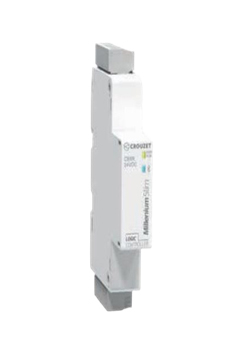
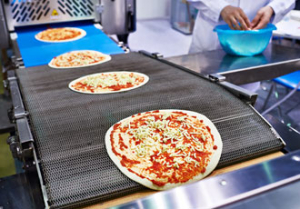
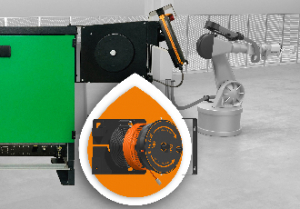
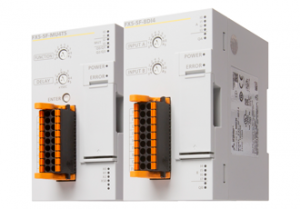







Write a comment
No comments